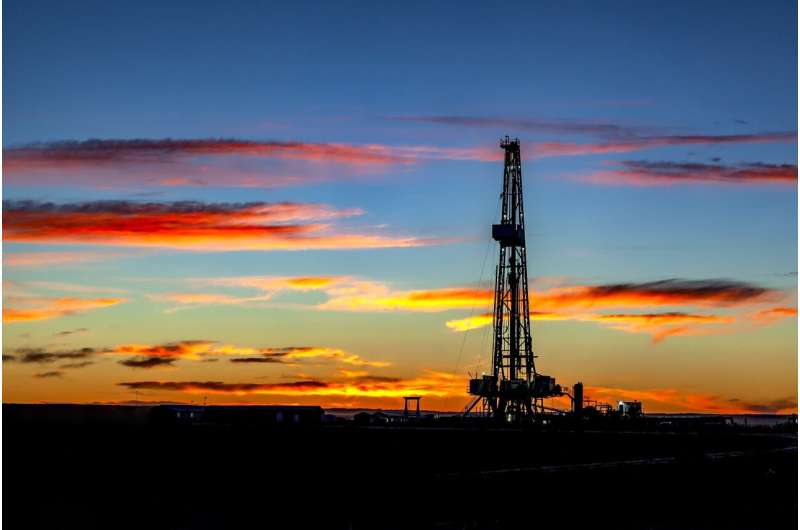Credit: Pixabay/CC0 Public Domain
Efforts to mitigate the potentially harmful effects of oil and gas drilling are often focused on single measures, such as increasing setbacks, the minimum allowable distance between drilling and homes, schools, and other sensitive locations. However, in a July 6 commentary in Environmental Research Letters, a group of public health experts from several universities and organizations urges adoption of a multi-layered approach when developing policies to mitigate the impact of gas and oil production operations. They lay out a framework for decision-making, which they say would facilitate the application of more public health protective measures.
"Oil and gas development can emit multiple hazards and therefore requires multiple solutions to protect communities and the environment," said Nicole Deziel, Ph.D., the paper's lead author and an associate professor of epidemiology (environmental health sciences), environment and chemical and environmental engineering at Yale University. "Our paper provides a framework for policymakers, industry, and community leaders to weigh which approach or combination of approaches would be most effective for a given scenario."
The growth in the oil and gas development (OGD) industry has placed millions of United States residents in the path of multiple hazards associated with OGD operations. In 2020, nearly one million oil and gas wells were in operation, and a 2017 analysis estimated that 17.6 million U.S. residents lived within 1,600 meters (1 mile) of an active oil or gas well. Evidence continues to mount that OGD contributes to air pollution, water contamination, noise, psychosocial stress, and health risks.
Studies have reported associations between residential proximity to oil and gas operations and increased adverse pregnancy outcomes, cancer incidence, hospitalizations and asthma. Some drilling-related operations have been located near lower-resourced communities, worsening their cumulative burden of environmental and social injustices.
In their paper, the authors describe the strengths and limitations of available control strategies. They describe how certain measures, like engineering controls, although typically considered quite effective at capturing pollutants at the source, may not be sufficient due to the complex array of potential emissions—like noise, air pollution, greenhouse gases, and increased local truck traffic. In contrast, reducing new drilling and properly discontinuing active and inactive oil and gas wells would be most effective because it eliminates the source of nearly all environmental stressors.
"It is important to note that increasing setbacks, the distance between a home and oil and gas drilling site, doesn't do anything to mitigate impacts on climate change or regional ozone," said Lisa McKenzie, a co-author of the paper and associate professor at the Colorado School of Public Health, University of Colorado Anschutz Campus.
Deziel says that "although phasing out drilling may sound like a substantial departure from the status quo, it's important to note that many states and municipalities are already taking steps to do so, such as Los Angeles which has approved a ban on all new oil and gas wells."
The authors recommend scientists and practitioners take a more integrated approach.
More information: Nicole C Deziel et al, Applying the hierarchy of controls to oil and gas development, Environmental Research Letters (2022). DOI: 10.1088/1748-9326/ac7967
Journal information: Environmental Research Letters
Provided by Yale School of Public Health
























